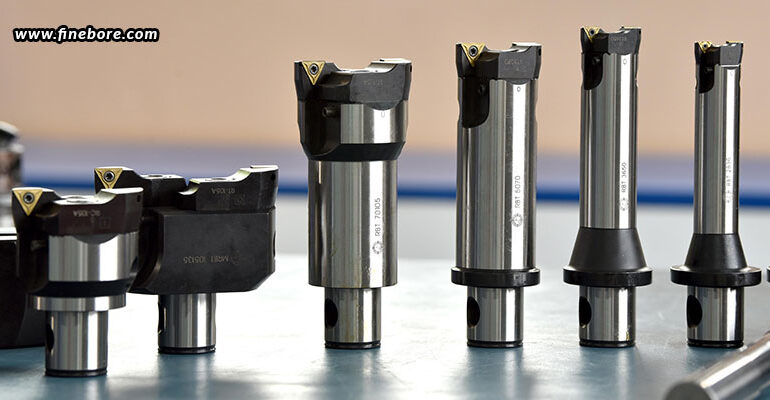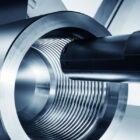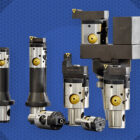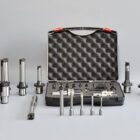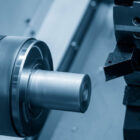A boring bar is a cutting tool used in machining processes to precisely enlarge or shape existing holes. They are essential for achieving high dimensional precision and surface finish in a variety of industries, such as manufacturing, aircraft, and automobiles. A boring bar’s fundamental design entails attaching a cutting tool onto a shank, which is subsequently fixed in the tool holder of a machine tool. The boring bar’s head retains the bit or insert for the cutting tool, while the shank provides stability and rigidity during machining. When the boring bar’s cutting edge makes contact with the workpiece, it removes excess material and shapes the hole.
The basic components of a boring bar
The shank, or main body, the head, and the cutting edge are the three fundamental parts of a boring bar.
- The shank is the main body of the boring bar, which provides stability and rigidity while being machined. Usually manufactured out of hardened steel or carbide, it is meant to fit tightly into the tool holder.
- The cutting tool insert or bit is held in the head of the boring bar. In order to accommodate various cutting geometries and materials, it is typically interchangeable. Depending on the kind of boring bar being used, the head may be fixed or adjustable.
- The part of the boring bar that makes contact with the workpiece is known as the cutting edge. It is in charge of shaping the hole by removing excess material. Depending on the particular application, the cutting edge may be round, square, or triangular in shape.
Three basic types of boring bars
Although there are many other kinds of boring bars available, the solid carbide boring bar, indexable insert boring bar, and micro boring bar are the three most basic and commonly used bars.
- Solid carbide boring bars are made with solid carbide, making them ideal for high-speed machining of hard materials because of their superior stiffness, wear resistance, and stability. Boring tools made of solid carbide are frequently utilized in precision machining processes.
- Indexable insert boring bars have a replaceable insert at the cutting edge, which can be easily replaced when different cutting requirements arise or when the current insert wears out. Since the inserts may be customized for particular materials and cutting conditions, indexable insert boring bars offer versatility and cost-effectiveness.
- Micro boring bars are made for cutting holes with small diameters. They are ideal for complex and precise machining jobs due to their small size and excellent precision. These boring bars are frequently employed in industries like electronics, medical technology, and aerospace, where small-sized components are involved.
While every boring bar can help enhance accuracy and efficiency in hole making, every kind of boring bar has its own unique advantages and applications. Micro boring bars are experts at machining small diameter holes, while solid carbide bars excel at high-speed machining and hard materials. Indexable insert bars provide adaptability and cost efficiency. The specific machining needs, material characteristics, and intended results all play a role in selecting the most appropriate boring bar. No matter what your industry, application, and requirement, you can always get in touch with FineTech Toolings to get your hands on the best boring bars for your needs. These expert precision boring bars manufacturers in Bangalore, with an in-depth expertise of almost three decades, will help you find the most appropriate boring bar and other accessories required for your particular application.

